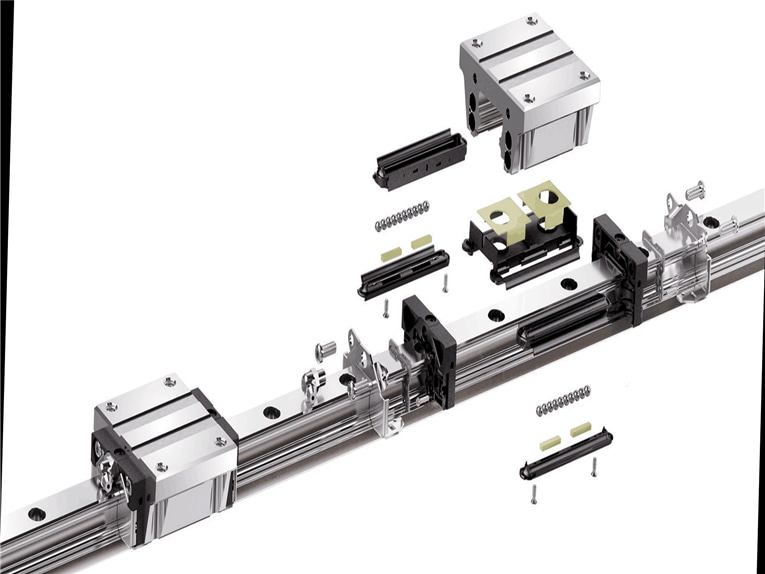Make a Good Choice for Your Linear Positioning System
A linear guide (or linear bearing) is a mechanical element that allows relative motion between two surfaces, with one surface supporting the other, and minimum friction between the two. There are two basic types of linear guides: plain and rolling element. While their general function is the same, their design and performance differ significantly.
【Linear guides with plain (sliding) motion】
Plain bearings are the simplest type of linear guide, relying on sliding contact between two surfaces. Their construction can be boxway, dovetail, or shaft and bushing. Boxway bearings are able to carry the highest loads, while dovetail designs require less precise machining and assembly. Plain bearing bushings are simple to manufacture and install, but their unsupported shafts give them limited load capacities and make them vulnerable to deflection.
While metal surfaces provide the highest stiffness and load capacities, plain bearings can also be made of plastics or composites for high corrosion resistance and inherent lubricating properties. It’s important to note that sliding contact should always be between dissimilar materials, with one element being harder than the other. This allows wear to be concentrated in the softer element.
Plain bearings have a high coefficient of friction, typically 0.05 to 0.1, when compared to rolling element bearings. But, unlike rolling elements, they can withstand shock loads and vibrations without significant damage to the surfaces. Plain bearings are also less sensitive to contamination, and rarely experience catastrophic failure.
【Linear guides with rolling motion】
Rolling element linear guides add balls or rollers between the two bearing surfaces. Rolling bearings can be recirculating (profiled rail guides or linear bushing/linear bearing guides) or non-recirculating (cam roller guides or crossed-roller slides). Recirculating designs allow unlimited motion along the length of the guide rail or shaft, where non-recirculating designs are limited in stroke by the length of the bearing.
A significant advantage of rolling element linear guides is their low coefficient of friction, which is typically 0.005 to 0.01. Because they’re made of bearing steel, they have much higher load capacities and can be preloaded for very high rigidity. Preload, however, increases friction and must be taken into account when sizing rolling element linear guides.
While plain linear bearings can be made from a wide variety of materials, the diversity in profile rail type rolling element bearings comes in their track geometries and raceway arrangements. Track geometry defines how the rolling elements make contact with the raceways. Profiled rail track geometries can be either circular arc, which provides lower friction, or Gothic arch, which gives higher moment capacities. In addition, the arrangement of the raceways on the profiled rail can be either face-to-face or back-to back. The face-to-face arrangement has equal load capacities in all directions, while the back-to-back arrangement gives greater torsional moment capacities.
Post time: Oct-14-2019








